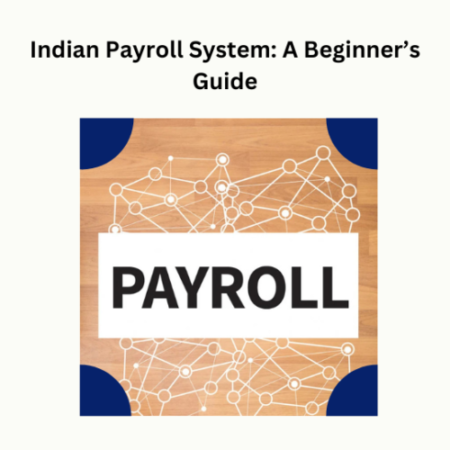The Indian payroll system is a structured process designed to manage employee wages, deductions, and statutory compliance in line with Indian laws. For beginners, understanding the basics of payroll is essential, as it involves not just calculating salaries but also ensuring compliance with various regulations and keeping accurate records.
1. What is Payroll?
Payroll refers to the total amount a company owes to its employees for a specific period. The process includes calculating wages, deducting taxes, and disbursing salaries. Payroll also involves tracking benefits, handling leave, and ensuring compliance with statutory regulations.
2. Key Elements of Indian Payroll
The payroll process includes several elements:
- Gross Salary: Total compensation before deductions.
- Basic Salary: Core component of an employee’s salary.
- Allowances: Additional earnings like House Rent Allowance (HRA), Dearness Allowance (DA), etc.
- Deductions: Contributions to Provident Fund (PF), Employee State Insurance (ESI), Professional Tax, and Income Tax.
- Net Salary: Final amount paid to employees after deductions.
3. Statutory Components in Indian Payroll
The Indian payroll system is heavily influenced by labor laws to protect employee rights. Key statutory components include:
- Provident Fund (PF): A retirement savings scheme requiring both employee and employer contributions.
- Employee State Insurance (ESI): Health insurance for employees earning below a certain threshold.
- Professional Tax: Levied by state governments on income.
- Income Tax (TDS): Tax Deducted at Source, calculated based on annual income and deducted monthly.
4. Steps in the Payroll Process
- Employee Data Collection: Gather essential details like bank account info, tax declarations, and attendance records.
- Salary Calculation: Calculate gross and net pay considering basic salary, allowances, bonuses, and deductions.
- Compliance Checks: Ensure compliance with laws like PF, ESI, and TDS.
- Payroll Disbursement: Transfer salaries to employees’ bank accounts.
- Payroll Reporting: Maintain accurate records for audits and statutory filings.
5. Common Payroll Challenges
- Compliance with Multiple Regulations: Payroll must comply with national and state-specific labor laws.
- Data Accuracy: Errors in employee data or salary calculations can lead to compliance issues.
- Technology Integration: Managing payroll with outdated software can complicate the process.
6. Benefits of an Effective Payroll System
- Accurate Payroll Processing: Ensures employees are paid correctly and on time.
- Reduced Compliance Risks: Avoids penalties and legal issues by adhering to statutory laws.
- Increased Employee Satisfaction: Timely and accurate payments contribute to better morale and trust.
7. Getting Started with Payroll Software
Modern payroll software helps automate calculations, manage compliance, and streamline the payroll process. When choosing software, look for features like tax calculation, automated compliance updates, and easy integration with HR and accounting systems.
Conclusion
Understanding the Indian payroll system is crucial for every business in India. By familiarizing yourself with its components, compliance requirements, and available tools, you can ensure a smooth payroll process that keeps both employees and authorities satisfied.
“Master HR Skills with Industry-Recognized Certification! Next Innovation Asia equips you for success with expert guidance and career support. Join us!”

